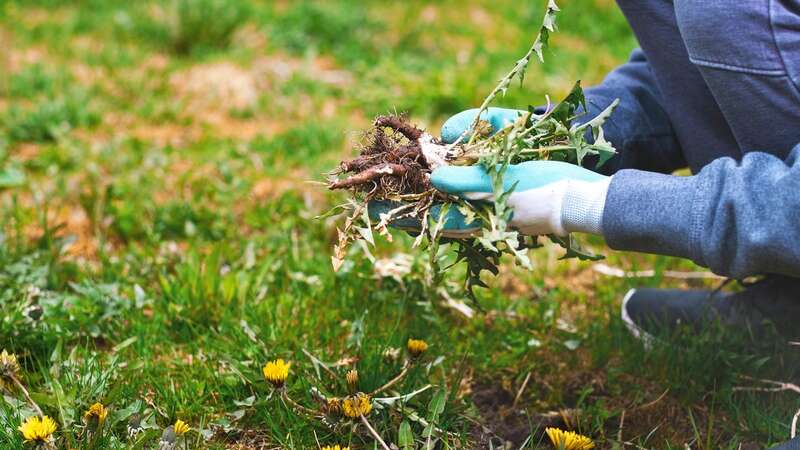
These hacks will effectively rid your garden of dandelions naturally.
Not everyone is fully appreciative of the pollinator powerhouse that is a dandelion, and some people would prefer they didn't pop up so easily in their garden. Dandelion seeds spread far and wide in the breeze, which is why they appear so prolifically - from cracks in the pavement to the midst of your prized plants in your beds.
If you are concerned there are a few too many dandelions popping up in your garden for your liking, taking over the nutrients from your soil and imposing on the plants you've dedicated yourself to growing, then here are three seriously simple solutions that will help rid your garden of the wildflower, all without using harsh chemicals that could damage the ecosystem of your green space.
As reported in The Express, experts have come together to provide three possible solutions to a plague of dandelions in your garden, all without reverting to chemical weedkillers. Tom Hilton, the director of National Greenhouse, recommends opting for white vinegar when it comes to ridding your garden of dandelions.
Create a solution that is 95 percent water and 5 percent white vinegar and mix it well before spraying. "Make sure to aim for the roots, base, and then gradually spray up and down, making sure to give a good few applications," the expert explains. However, this should be used when the dandelion has freshly sprung up and may not be quite as effective once it has established itself.
 Make 2023 your most productive year yet by using the 'intention' method
Make 2023 your most productive year yet by using the 'intention' method
Creating a water and vinegar solution will be very cost-effective, as a 568ml bottle will only cost you 35p from Tesco, or the same price at Aldi.
Another natural solution is to simply cover the dandelion, meaning that it doesn't get the sunlight it needs to thrive. Grab any small pot from your garden, an expert recommends, and pop it over the wildflower. "This will help you to kill off the whole plant rather than just the leaves."
The final natural method is to dig up each dandelion individually, per Gardening Know How. This is also easier when the plant is young, and because of the length of dandelion roots, you're going to need the right tool: "You'll need a long knife or small garden fork, or some gardeners recommend using a screwdriver. Make a deep cut downwards into the soil, on all four sides around the dandelion, then pull it out."
However, there are so many benefits to dandelions that it may be worth considering letting a few live on in your garden. According to the RHS, "their value to wildlife, providing food to many insects and birds, is perhaps the main reason why they should be welcomed in our gardens. Their nectar- and pollen-rich flowers appear over a long period and are loved by bees and butterflies – which is why dandelions are included on the RHS Plants for Pollinators list.
"The early flowers are especially valuable as they provide food at a time when other sources are scarce. The seeds that follow provide food for bullfinches, greenfinches, goldfinches, and serins."
Not only that but dandelions have been used as medicine for a long time and are rich in vitamins and minerals and initial studies have shown that they can have a wide range of health benefits.
Do you have a story to tell? Email: emma.mackenzie@reachplc.com
Read more similar news:
Comments:
comments powered by Disqus
































